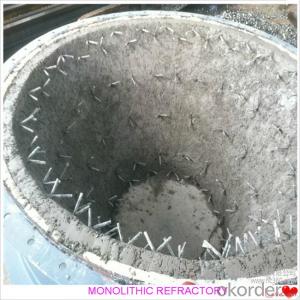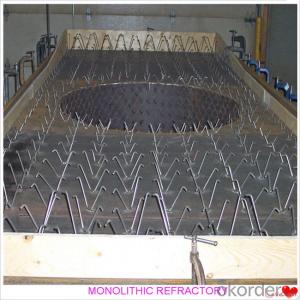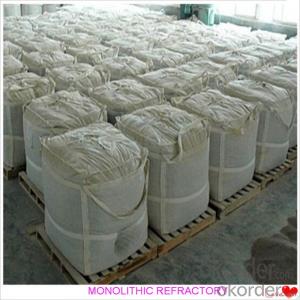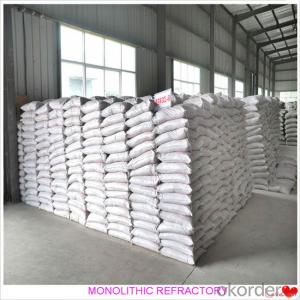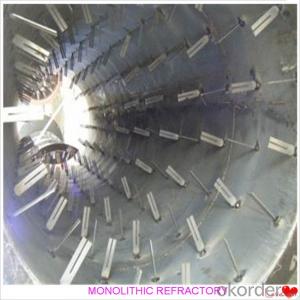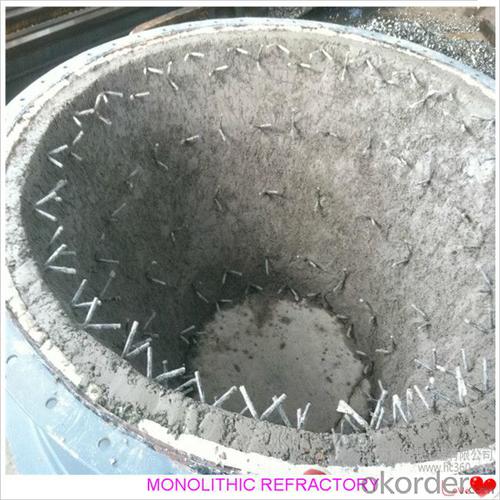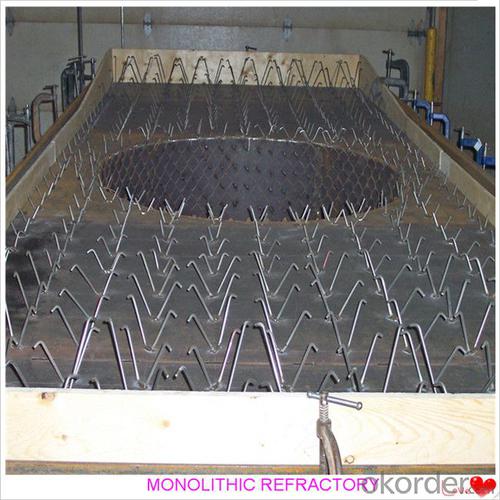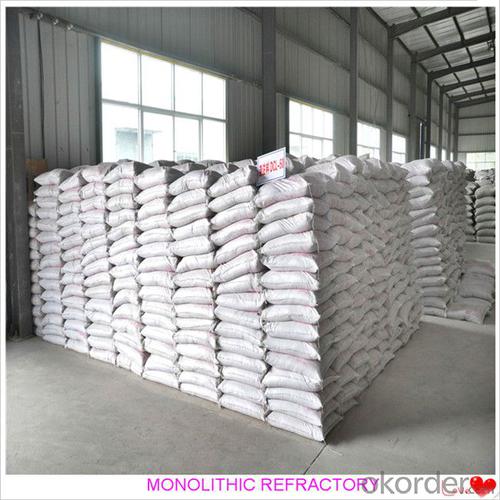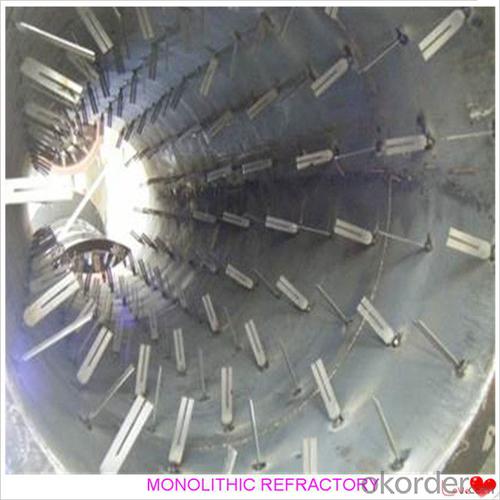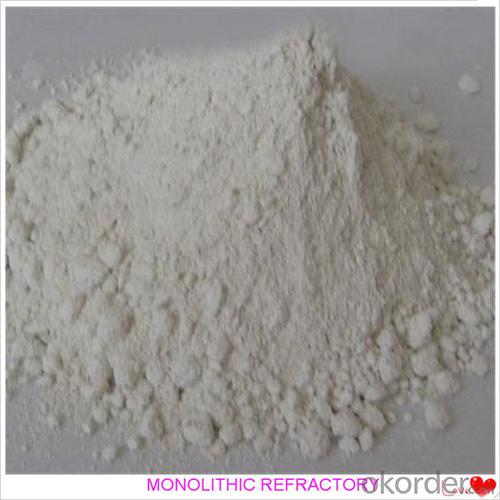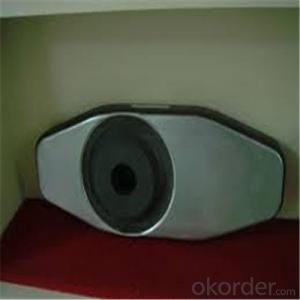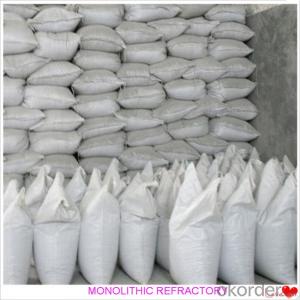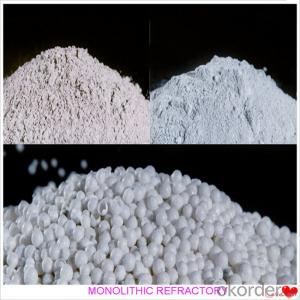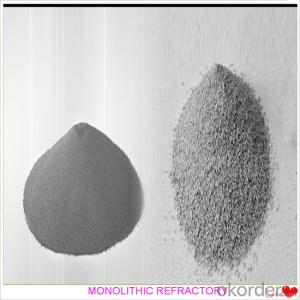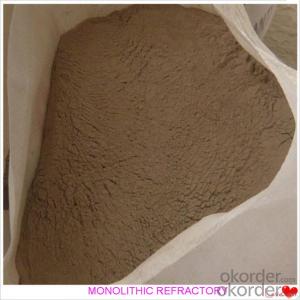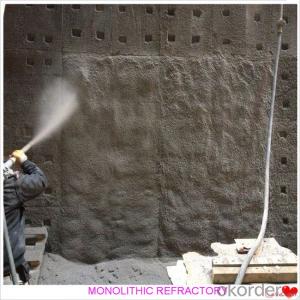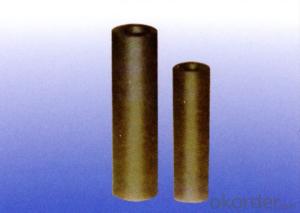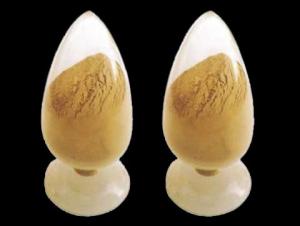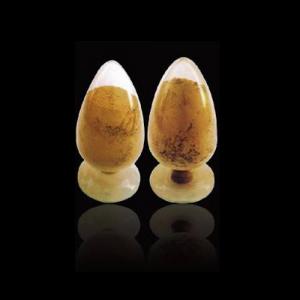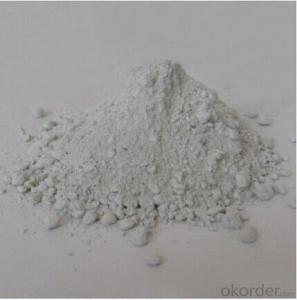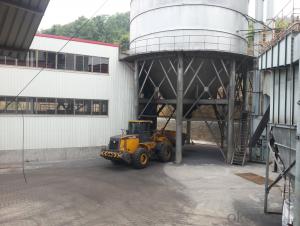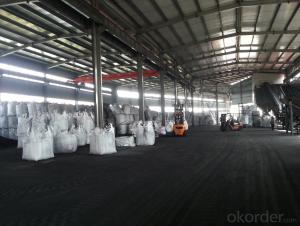Monolithic Refractories for Iron and Steel Industry - Castable for Fireplace and Industrial Furnace Cement Industry
- Loading Port:
- China main port
- Payment Terms:
- TT OR LC
- Min Order Qty:
- 1000 kg
- Supply Capability:
- 3000000 kg/month
OKorder Service Pledge
OKorder Financial Service
You Might Also Like
Castable For Fireplace and Industrial Furnace Cement Industry
Product Description:
Gunning castable is manufactured according to international standards. The product is famous for its excellent abrasion resistance and low thermal conductivity. Further, these can be provided in different specifications as required by the clients. The gunning castables are used high purity raw materials and additives as the main material, and made of under superfine powder adding technology.
Product Advantages:
The material has excellent structural stability and air tightness, and has high physical and chemical properties, also has a fine working ability.They should be used with the same material products.
Product Applications:
For feature of gunning castable, they have excellent abrasion resistance, thermal shock resistance, high-temperature resistance, anti-corrode and have high intensity.
Designed for refractory lining of blast furnace iron and slag runners, skimmers and soon
They can be used in troughs of small and mid size BFs and in all positions of the troughs where fast tapping is required.
Product Specifications:
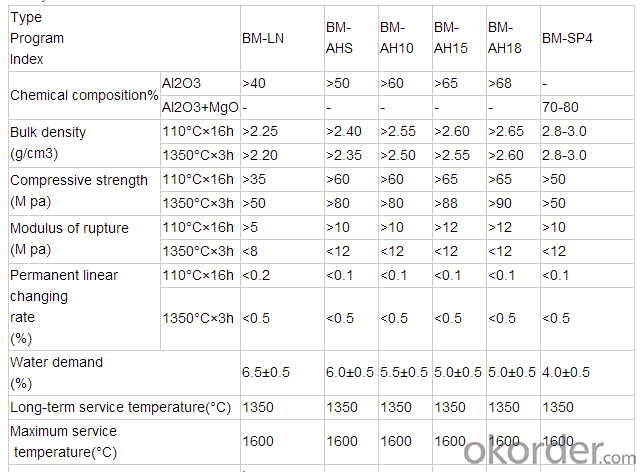
FAQ:
1. How you can control your quality?
For each production processing, we have complete QC system for the chemical composition
and Physical properties. After production, all the goods will be tested, and the quality certificate
will be shipped along with goods.
2. What's your delivery time?
It usually needs about 20days- 45 days after receiving the deposit.
3. Do you provide free samples?
Yes, we can provide a free sample for testing, If we have sample in stock,
The quantity based on the material type, The buyer should bear all the shipping costs.
4. What's your payment terms?
We can accept 30% deposit, 70% balance before shipment for ordrs over $ 2000.
5. Can we visit your Company?
Yes, certainly. You are very welcome to China and we will be honored to have a customer and friend.
Product Picture:
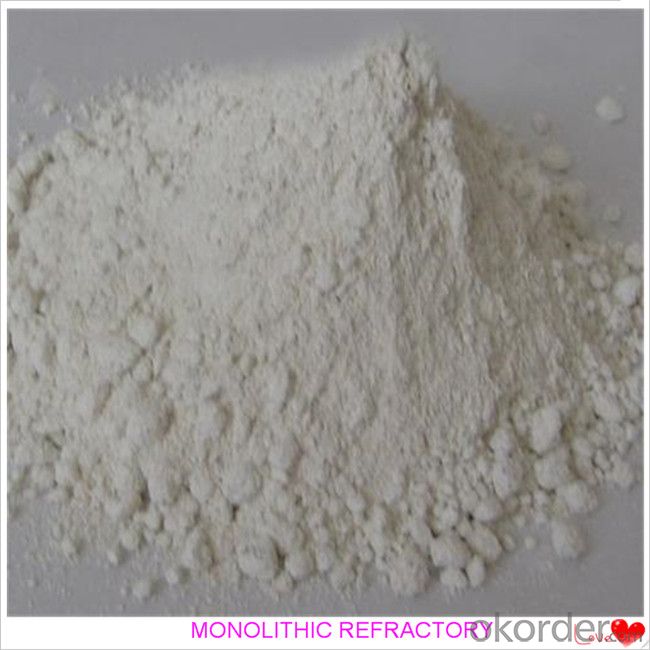
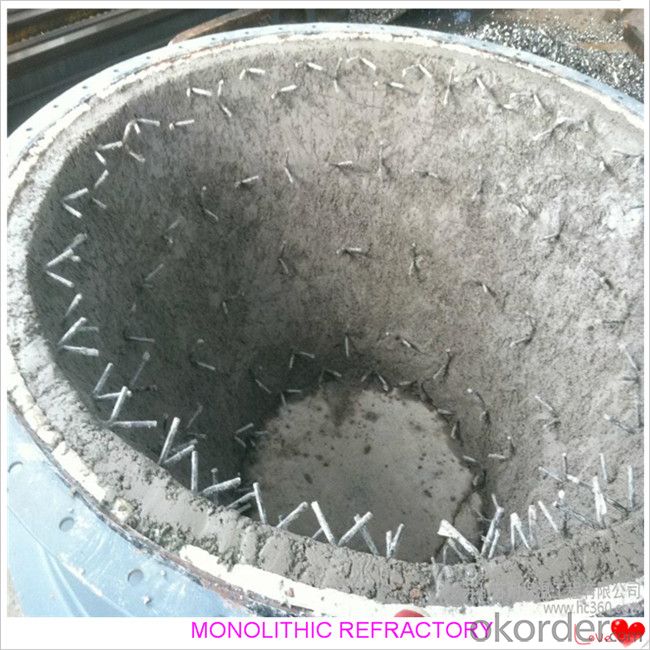
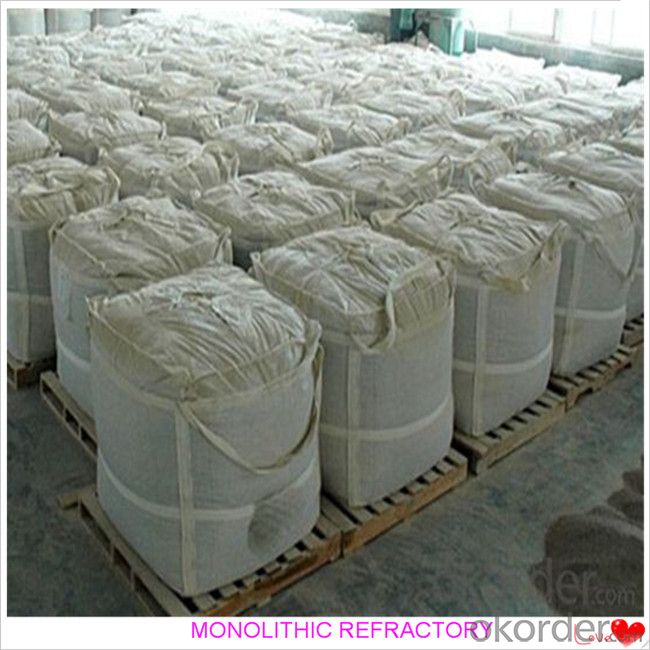
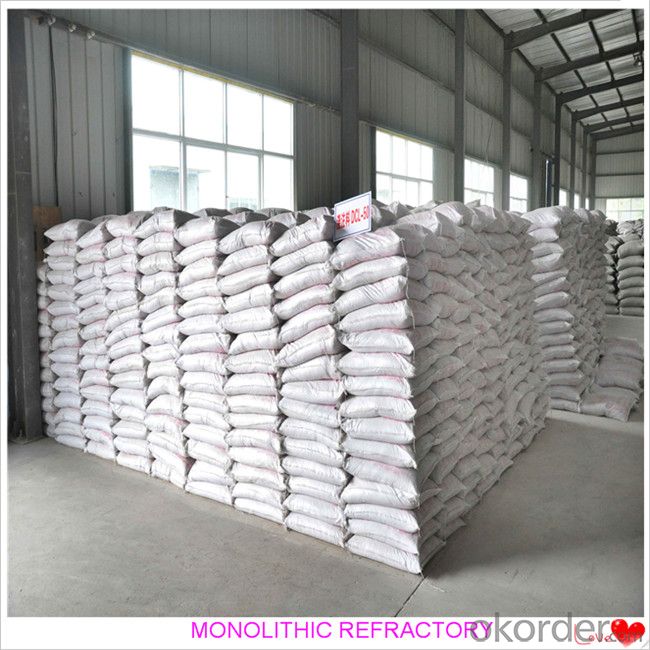
- Q: What are the challenges in using monolithic refractories in the iron and steel industry?
- The iron and steel industry faces significant challenges when it comes to using monolithic refractories. One of these challenges is the fact that monolithic refractories are more prone to thermal shock compared to traditional brick refractories. Unlike brick refractories, which are made from multiple materials and have strong structural integrity, monolithic refractories are made from a single material, which makes them more susceptible to cracking and failure when exposed to rapid changes in temperature. Another challenge lies in achieving consistent and uniform application of monolithic refractories. While brick refractories can be precisely shaped and fitted into specific areas, monolithic refractories are typically applied as a mortar-like mixture that is poured or sprayed into place. This process is more complex and requires skilled operators to ensure proper application and adhesion. Additionally, monolithic refractories have a shorter lifespan compared to brick refractories. They are more vulnerable to erosion and wear, especially in high-temperature environments and when exposed to harsh chemicals and slag. This means that regular maintenance and replacement of monolithic refractories are necessary, leading to increased downtime and costs for the iron and steel industry. Furthermore, selecting and customizing monolithic refractories can be challenging. The iron and steel industry has diverse operating conditions and requirements, making it difficult to find the right monolithic refractory composition and design that can withstand the specific demands of each application. Factors such as temperature, chemical composition, and mechanical stress must be carefully considered. In conclusion, although monolithic refractories offer advantages such as easy installation and versatility, their susceptibility to thermal shock, difficulty in achieving uniform application, shorter lifespan, and the need for customized selection present challenges for their effective use in the iron and steel industry.
- Q: How do monolithic refractories perform in aluminum holding furnace applications?
- Monolithic refractories perform exceptionally well in aluminum holding furnace applications due to their high thermal conductivity, excellent resistance to thermal shock, and superior mechanical strength. They can withstand the extreme temperatures and harsh chemical environments found in these furnaces, ensuring long-lasting and efficient operations. Additionally, monolithic refractories offer easy installation and maintenance, making them a preferred choice in aluminum holding furnace applications.
- Q: In iron and steel industry, the main raw materials for blast furnace ironmaking are iron ore, coke and limestone. What's the use of limestone here?
- CaCO3 CaO + CO2 =C = 2CO + CO2Fe2O3
- Q: How do monolithic refractories contribute to the reduction of heat loss in iron and steel furnaces?
- Monolithic refractories play a crucial role in reducing heat loss in iron and steel furnaces. These refractories are designed to provide a continuous lining throughout the furnace, eliminating joints and seams that can result in thermal leaks. One way monolithic refractories contribute to heat loss reduction is through their excellent thermal insulation properties. They have low thermal conductivity, meaning they are effective at restricting the transfer of heat from the furnace to its surroundings. This insulation helps to maintain the high temperatures required for efficient iron and steel production within the furnace, while minimizing heat loss to the surrounding environment. Another way monolithic refractories contribute to heat loss reduction is by providing a protective barrier that prevents the escape of hot gases and molten metal. This barrier helps to maintain the integrity of the furnace lining, preventing any gaps or cracks that could allow heat to escape. By ensuring a tight and continuous lining, monolithic refractories reduce heat loss by keeping the heat contained within the furnace. Furthermore, monolithic refractories have high resistance to thermal shock and erosion, which are common challenges in iron and steel furnaces. These refractories can withstand rapid temperature changes, preventing any sudden cracks or failures that could lead to heat loss. Additionally, they are resistant to the corrosive effects of molten metal and hot gases, ensuring the longevity of the lining and maintaining its insulating properties over time. In summary, monolithic refractories contribute to the reduction of heat loss in iron and steel furnaces through their excellent thermal insulation properties, ability to provide a continuous lining, resistance to thermal shock and erosion, and protection against corrosive substances. By minimizing heat loss, these refractories optimize the energy efficiency and productivity of the furnace, ultimately leading to cost savings and improved overall performance in the iron and steel industry.
- Q: How do monolithic refractories withstand the mechanical impacts in ladle lip applications?
- Monolithic refractories are able to withstand the mechanical impacts in ladle lip applications due to their unique properties and composition. Firstly, monolithic refractories are made from a single, homogenous material, which provides them with a high level of structural integrity. This means that they are less vulnerable to cracking or breaking when subjected to mechanical impacts. Additionally, monolithic refractories often contain additives such as fibers or aggregates, which further enhance their resistance to mechanical stresses. These additives help to distribute the forces applied to the refractory material, reducing the concentration of stress points and increasing its overall durability. Furthermore, the application process of monolithic refractories allows for a seamless and continuous lining, eliminating the presence of joints or weak points that are susceptible to mechanical damage. This ensures a more uniform distribution of the impacts and enhances the material's ability to withstand them. Moreover, monolithic refractories can be designed with specific compositions and formulations that are tailored to resist mechanical impacts. Various binders and additives can be incorporated to enhance the material's toughness, impact resistance, and overall mechanical strength. Finally, the selection of monolithic refractories for ladle lip applications also takes into consideration the operating conditions, such as temperature and chemical exposure. By choosing refractories that are suitable for these conditions, their mechanical properties can be optimized to withstand the specific challenges posed by ladle lip applications. In summary, monolithic refractories are able to withstand mechanical impacts in ladle lip applications due to their homogenous structure, the inclusion of additives, the seamless application process, and the ability to customize their composition. These factors contribute to their ability to resist cracking, breaking, and other forms of mechanical damage, ensuring their longevity and effectiveness in ladle lip applications.
- Q: What are the challenges in repairing and maintaining monolithic refractories?
- One of the challenges in repairing and maintaining monolithic refractories is the difficulty in identifying and accessing damaged areas. Monolithic refractories are typically used in complex and intricate structures, making it challenging to locate and reach areas that require repair or maintenance. Another challenge is the high temperatures involved, as monolithic refractories are often exposed to extreme heat. This requires specialized expertise and equipment to ensure safe and effective repairs. Additionally, the composition and application of monolithic refractories can vary, making it essential to understand the specific type being used in order to perform accurate repairs and maintenance. Overall, the challenges lie in the complexity of the structures, the extreme temperatures, and the need for specialized knowledge and tools.
- Q: How do monolithic refractories perform in torpedo ladle applications?
- Monolithic refractories are commonly used in torpedo ladle applications due to their excellent performance and durability. Torpedo ladles are used in the steelmaking process to transport and pour molten metal from the blast furnace to the steelmaking furnace. Monolithic refractories, also known as unshaped refractories, are made from a single material and can be applied as a single, cohesive mass. This makes them highly versatile and easy to install in the torpedo ladle. In torpedo ladle applications, monolithic refractories offer several advantages. First and foremost, they have high heat resistance, allowing them to withstand the extreme temperatures and thermal shocks experienced during the transfer and pouring of molten metal. This ensures that the refractories do not crack or fail under these harsh conditions. Additionally, monolithic refractories have excellent corrosion resistance properties, which is crucial in torpedo ladles where the molten metal can be highly corrosive. They are able to withstand the aggressive chemical environment and prevent chemical reactions that could lead to refractory deterioration. Moreover, monolithic refractories have good thermal insulation properties, reducing heat loss from the molten metal and promoting energy efficiency. This helps to maintain the desired temperature of the metal, ensuring optimal steelmaking conditions. Furthermore, monolithic refractories offer good mechanical strength and resistance to abrasion, making them highly suitable for torpedo ladle applications where the refractory lining is subjected to mechanical stress and wear. Overall, monolithic refractories perform exceptionally well in torpedo ladle applications due to their high heat resistance, corrosion resistance, thermal insulation properties, and mechanical strength. They are able to withstand the extreme conditions and provide a reliable and long-lasting lining for torpedo ladles in the steelmaking industry.
- Q: What are the common challenges faced by monolithic refractories in the iron and steel industry?
- Monolithic refractories play a crucial role in the iron and steel industry, where they are extensively used in various applications such as lining furnaces, ladles, and tundishes. However, these materials also face several common challenges in this industry. One of the major challenges is thermal shock. Monolithic refractories are exposed to extreme temperature variations, particularly during the start-up and shut-down phases of the production process. The rapid heating and cooling cycles can cause thermal stress, leading to cracking and spalling. To combat this challenge, refractory manufacturers develop high-quality monolithic materials with enhanced thermal shock resistance. Another significant challenge is corrosion. The iron and steel industry involves the use of various aggressive materials such as molten metal, slag, and gases, which can chemically attack the refractory lining. This corrosion can lead to material degradation, erosion, and reduced service life. To address this issue, specialized monolithic refractories with excellent corrosion resistance are employed, often containing additives that can withstand the corrosive environment. Abrasion is also a common challenge faced by monolithic refractories in the iron and steel industry. The movement of raw materials, molten metal, and slag can cause mechanical wear on the refractory lining, resulting in loss of material and compromised performance. Refractory manufacturers develop abrasion-resistant monolithic materials that can withstand the intense wear and tear, ensuring prolonged service life. Furthermore, the iron and steel industry often requires refractories with good thermal conductivity. This is crucial to efficiently transfer heat and maintain optimal operating conditions. Achieving the right balance between thermal conductivity and mechanical strength can be challenging, as refractories with high thermal conductivity often exhibit lower mechanical strength. Therefore, selecting the appropriate monolithic refractory with the desired thermal conductivity properties is crucial for achieving optimal performance. Lastly, monolithic refractories also face challenges related to installation and maintenance. Due to their liquid or semi-liquid nature, the application of monolithic refractories requires skilled personnel and careful installation techniques. Moreover, periodic maintenance and repair are essential to ensure the longevity and performance of the refractory lining. Regular inspections, repairs, and proper curing techniques are necessary to mitigate these challenges and optimize the refractory's performance. In conclusion, monolithic refractories in the iron and steel industry face challenges such as thermal shock, corrosion, abrasion, thermal conductivity, and installation/maintenance. Addressing these challenges through the development of specialized refractory materials and employing proper installation and maintenance techniques is crucial for ensuring efficient and reliable performance in this demanding industry.
- Q: What are the advantages of using self-flow castables in the iron and steel industry?
- The advantages of using self-flow castables in the iron and steel industry are numerous. Firstly, these castables have excellent flowability, which allows for easy and efficient installation. This results in reduced labor costs and time savings during the installation process. Additionally, self-flow castables have high strength and excellent resistance to thermal shock. This makes them highly durable and capable of withstanding the extreme temperatures and thermal cycling conditions present in iron and steel applications. As a result, they provide long-lasting and reliable performance in these demanding environments. Furthermore, self-flow castables offer excellent dimensional stability, ensuring that the refractory lining maintains its shape and integrity even under high mechanical loads and thermal stresses. This feature is crucial in maintaining the structural integrity of the furnaces, ladles, and other equipment used in the iron and steel industry. Moreover, self-flow castables have low water requirements, reducing the risk of cracking and spalling during drying and firing. This leads to improved product quality and increased refractory lifespan. Overall, the advantages of using self-flow castables in the iron and steel industry include easy installation, high strength, thermal shock resistance, dimensional stability, and improved product quality. These benefits contribute to increased efficiency, reduced downtime, and cost savings for iron and steel manufacturers.
- Q: What are the benefits of using monolithic refractories in the iron and steel industry?
- Using monolithic refractories in the iron and steel industry has several advantages. Firstly, they have excellent thermal shock resistance, meaning they can withstand extreme temperature changes without cracking or spalling. This is crucial in an industry where materials are exposed to high temperatures during processes such as melting, casting, and heat treatment. Secondly, monolithic refractories have superior corrosion resistance, making them highly durable against the corrosive effects of molten metals and slag. This is particularly important in the iron and steel industry, where materials come into contact with aggressive molten iron, steel, and various chemical compounds. Furthermore, monolithic refractories provide excellent mechanical strength and abrasion resistance. They can withstand mechanical stress, vibrations, and impacts commonly encountered in the iron and steel industry. This ensures a longer lifespan for the refractories, reduces downtime for repairs or replacements, and improves overall operational efficiency. Additionally, monolithic refractories offer ease of installation and repair. Unlike traditional refractory bricks that require complex and time-consuming masonry work, monolithic refractories can be quickly and easily installed using simple methods such as casting, gunning, or spraying. This saves time and labor costs during initial installation and subsequent maintenance or repairs. Moreover, monolithic refractories provide flexibility in design and application. They can be customized to specific shapes and sizes, allowing for tailored linings in different parts of the iron and steel manufacturing process. This versatility enhances the overall efficiency and effectiveness of refractory linings, optimizing production output and ensuring consistent quality of the finished iron and steel products. In conclusion, there are numerous benefits to using monolithic refractories in the iron and steel industry. They offer exceptional thermal shock resistance, corrosion resistance, mechanical strength, and abrasion resistance. They are also easy to install and repair, and their flexibility allows for customized designs. Overall, monolithic refractories contribute to improved productivity, reduced downtime, and enhanced product quality in the iron and steel industry.
Send your message to us
Monolithic Refractories for Iron and Steel Industry - Castable for Fireplace and Industrial Furnace Cement Industry
- Loading Port:
- China main port
- Payment Terms:
- TT OR LC
- Min Order Qty:
- 1000 kg
- Supply Capability:
- 3000000 kg/month
OKorder Service Pledge
OKorder Financial Service
Similar products
Hot products
Hot Searches
Related keywords
